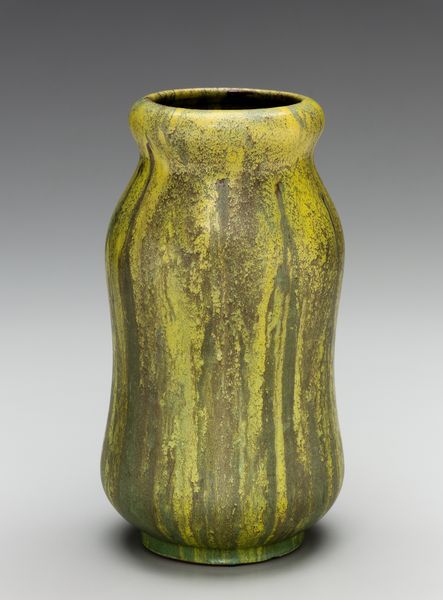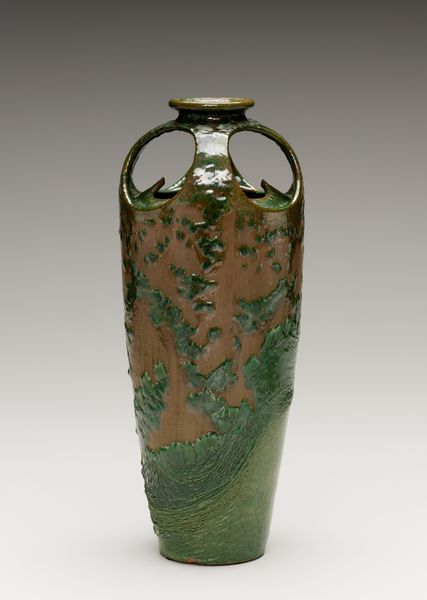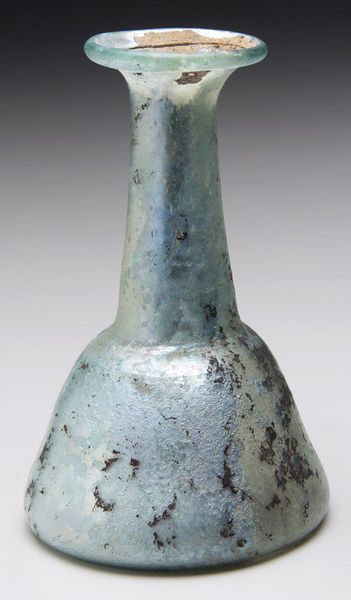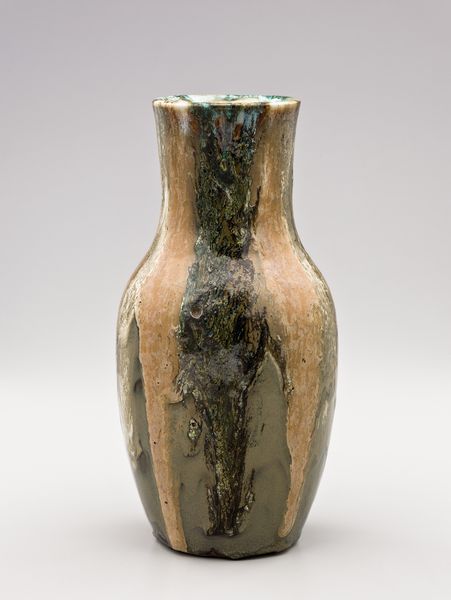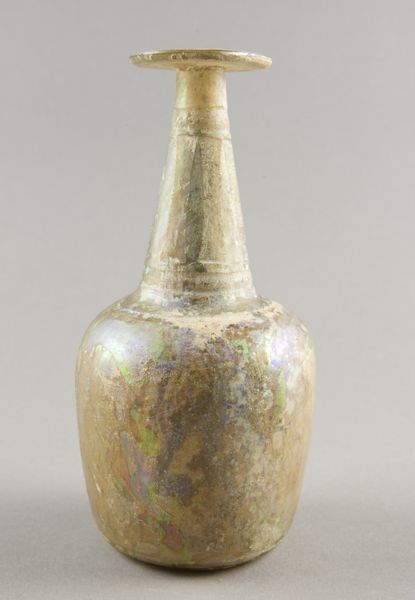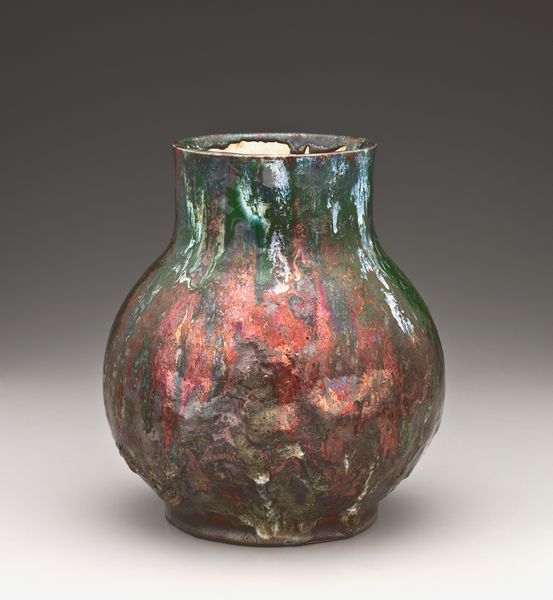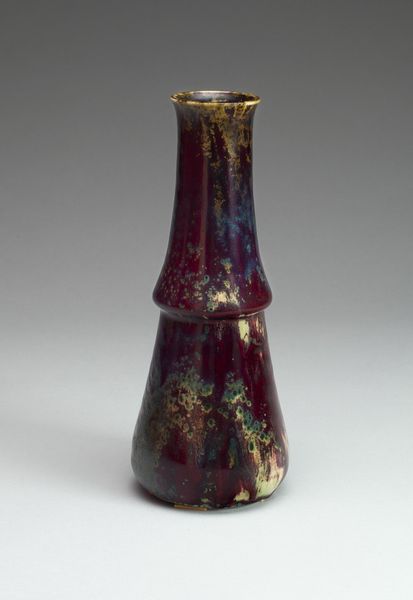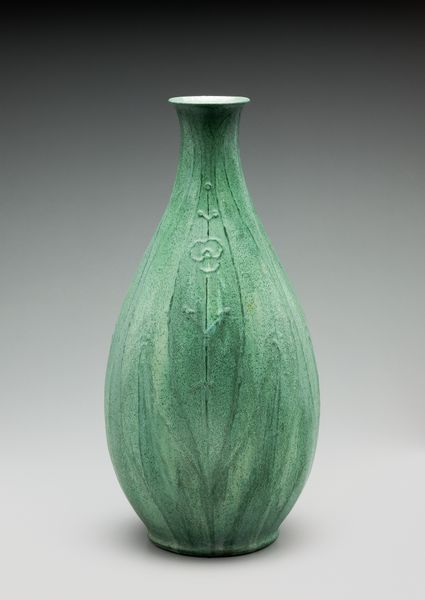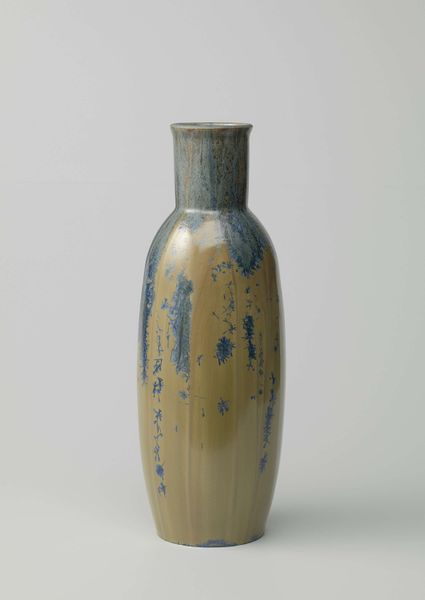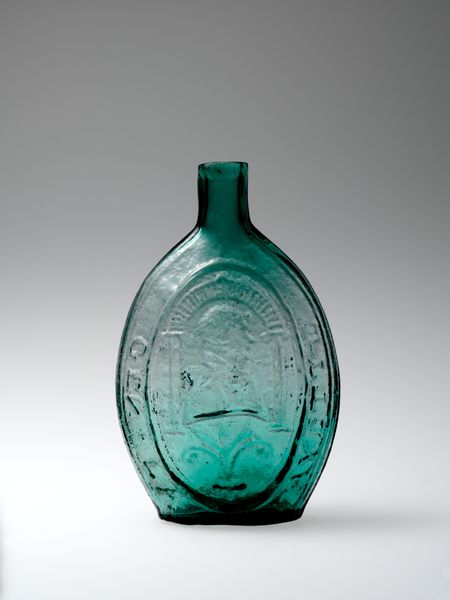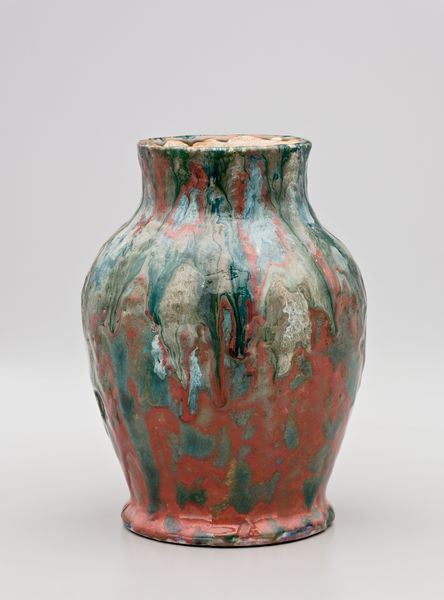
ceramic, earthenware
#
ceramic
#
earthenware
#
stoneware
#
ceramic
#
decorative-art
Dimensions: 11 5/8 in. (29.5 cm)
Copyright: Public Domain
Editor: So, this is a ceramic earthenware vase by William J. Walley, made sometime between 1895 and 1921. I’m struck by the blend of green and brown, and the way the glaze seems to drip down the surface. How do you interpret this work, especially considering the time it was created? Curator: This vase, made during a period of significant social and political upheaval, presents a fascinating commentary, perhaps unintentional, on nature and industrialization. Consider the Arts and Crafts movement—was this aesthetic response to the burgeoning industrial revolution a rejection of mass production, in favour of hand-crafted artistry? Do you see how the natural tones evoke themes of environmental consciousness, and the fragility of our planet in light of mass consumption? Editor: I do see the connection to the Arts and Crafts movement. The earthy tones and the visible handwork definitely feel like a deliberate contrast to industrial aesthetics. Curator: Exactly! It also makes me consider the socioeconomic implications. Who could afford such handcrafted objects? What did this say about class and access to beauty in an era of increasing disparity? Think about who was represented in art and craft during this time, and who was not. What stories are being told, and whose stories are omitted? Editor: That’s a great point. It makes you wonder about the unseen labor and the intended audience for such pieces. This wasn't just about aesthetics, but also about communicating specific values. Curator: Precisely! It reminds us that art doesn’t exist in a vacuum. It is intrinsically linked to the social and political realities of its time. By viewing historical objects through the lens of contemporary theory, it provides a deeper comprehension and new perspective on its history and lasting effect on our lives today. Editor: I never thought of a simple vase being so…intersectional. Now I feel like I have to re-evaluate everything I see! Curator: That’s the point, isn’t it? Art invites questions and challenges assumptions.
Comments
No comments
Be the first to comment and join the conversation on the ultimate creative platform.
